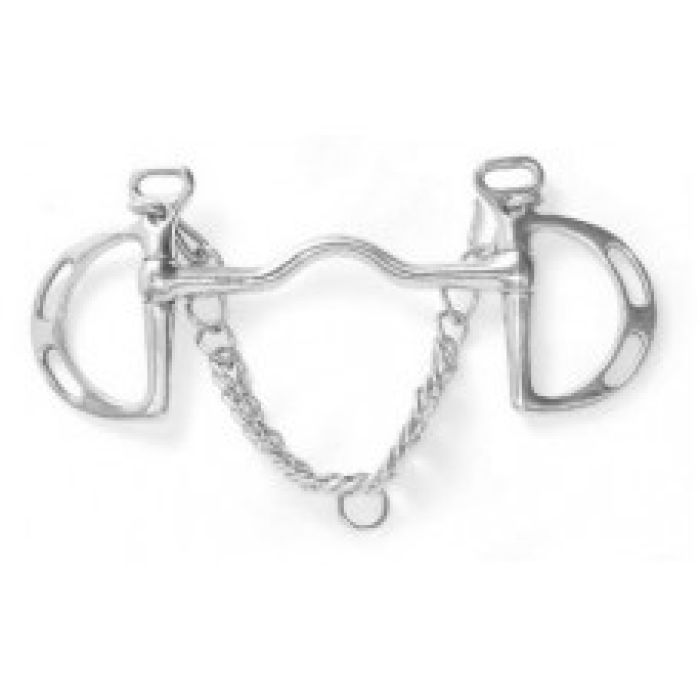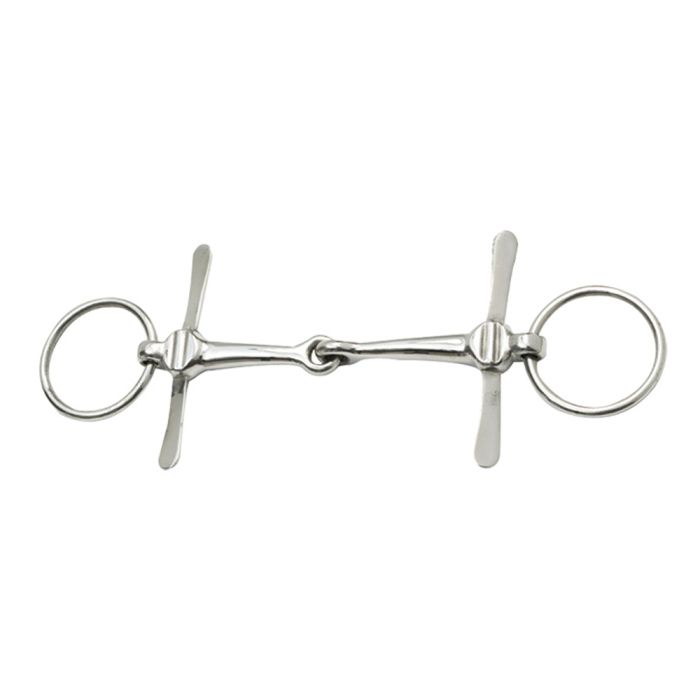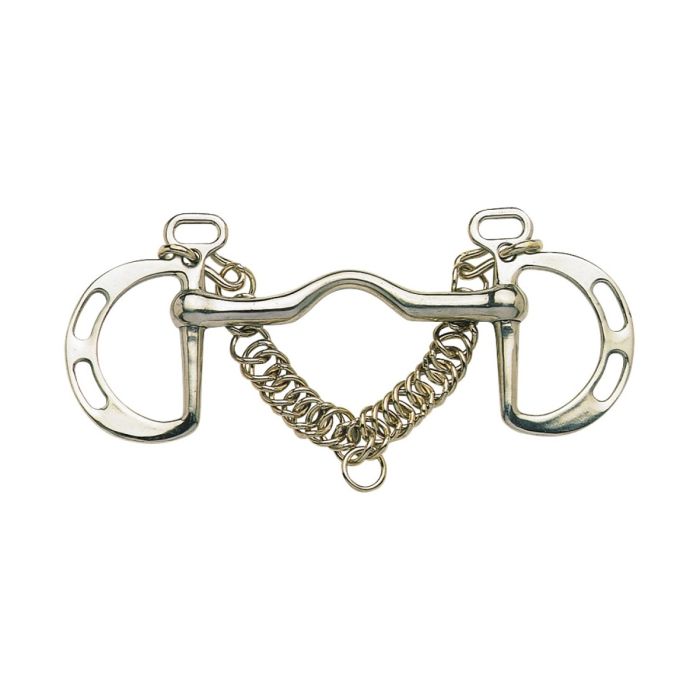Pelham
A Pelham is fundamentally a bit with both a snaffle action and a curb action.
A Pelham is an attempt to provide the benefits of a double bridle without the complexity of needing two bits, as well as the versatility of different categories of bits all rolled into one.
Most Pelhams look like a curb bit with an added ring right at the mouthpiece for a snaffle rein. Like a curb, if a rein is attached at the end of the curb shanks, they need to be used with a curb chain to be effective. Because the snaffle rings require the cheeks above the mouthpiece to be longer than on a typical curb bit, the curb chain often ends up sitting higher than it should, which can be corrected by running the curb chain through the snaffle rings.
A Pelham can be used with a variety of rein arrangements. Two reins can be used so that the rider may in theory have both a snaffle and a curb rein. In reality, neither can really be used independently, as with a double bridle, nor will the action of each be as effective. The two reins can also be joined together before reaching the rider’s hands through use of a divided rein, or with a converter strap, also known as ’roundings,’ which is a typical arrangement for children’s ponies. The bit can also be used with just a single rein, either at the snaffle ring or the curb ring, depending on the desired action. As with anything that tries to perform multiple functions, neither of these arrangements is as effective as when an actual snaffle or curb is used, but the versatility is sometimes desirable, especially with lesson horses.
Mullen Mouth - Just like a mullen mouth snaffle, a Pelham of this variety has a straight mouthpiece, which distributes rein pressure more evenly over the tongue, and because of that, less on the bars.
Arch Mouth - The arch-mouth Pelham looks somewhat like a mullen mouth, in that it has a solid bar for a mouthpiece. However, in this case, the whole mouthpiece is bowed slightly upwards, which gives the tongue more room, hence putting more pressure on the bars
Ported Mouth or Hartwell - The ported mouth Pelham (also called a Hartwell or Cambridge) is shaped like a typical curb or Weymouth bit, in that the middle section is curved upwards to allow more room for the tongue, hence putting more pressure on the bars.
Jointed Pelhams are a common variety in this family of bits, though they are a mixed bag in terms of advantages and disadvantages. Just like a jointed snaffle, the mouthpiece has two arms that are linked together in the centre.
Tom Thumb - Just as a Tom Thumb curb indicates shorter shanks, so the Tom Thumb Pelham is simply a Pelham with short curb shanks. These bits come with a variety of different mouthpieces, which affect how severe the action of the bit.
The Kimberwick (also known as a Kimblewick) is somewhat similar to a pelham bit, in that it tries to combine the action of snaffle and curb into one bit, and in this case, through one rein. The mouthpiece is typically ported, like a curb, the cheeks are D-shaped with the mouthpiece attaching to the upper part of the “D,” the cheek piece of the bridle attaches to an eye above the D-ring and has hooks for a curb chain. This combination of ported mouth, slight leverage from the D-ring (much greater than on a D-ring snaffle because of the off-set placement of the mouthpiece), and curb chain basically make this a mild form of curb bit. Additionally, most Kimblewicks have two slots on the loop of the D-ring, so that the rein may be attached higher or lower, depending on how much leverage is required – the lower attachment affording greater leverage, very similar to a short-shanked curb.
Pelham and Kimblewick Bits
Kimblewick Port Mouth Slotted Cheeks - Stainless Steel
Starting at $49.95
Tom Thumb Stainless Steel Bit
Starting at $49.95



